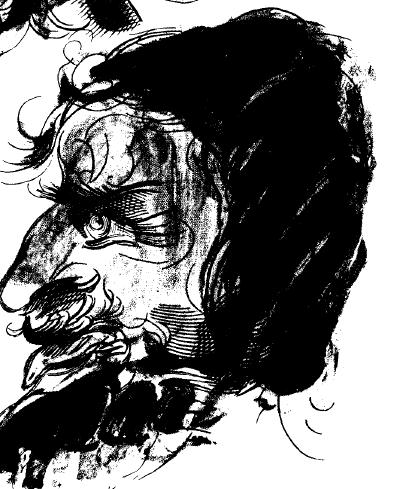What Do Demons Look Like? November 27, 2015
Author: Beach Combing | in : Modern , trackbackBeach really, really, really doesn’t like ceremonial magic, creepy pentagrams and casual acquaintances with books by the ‘Beast’ Crowley on their shelves. But he recently steeled himself to read The Magus (1801) by Francis Barrett, mainly to see what the alchemists and magi had to say about fairylore. There is a lot of material as it happens. But what Beach found most striking was the Fiends Folio of demons: Barrett thoughtfully provided mugshots of some of the worst ‘dudes’ you would run into while waving your wand. So just in case you are about to do something very foolish and you want to know which of the fallen angels is red and smoking at the bedroom door waiting to take you ‘downstairs’ there follow a selection. Also, a note, these are screen captures from a poor pdf of the original book and its plates. The names are not always visible: for example, the demon heading this post once had a name, by which FB presumably summoned it, but that name was not scanned in successfully.
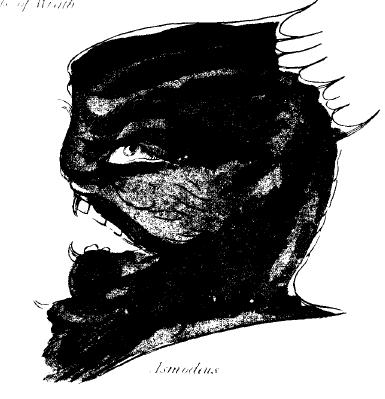
First up is Asmodeus, the demon of sexual desire. As with many of these demons, unusual teeth. Look at the front curlers.
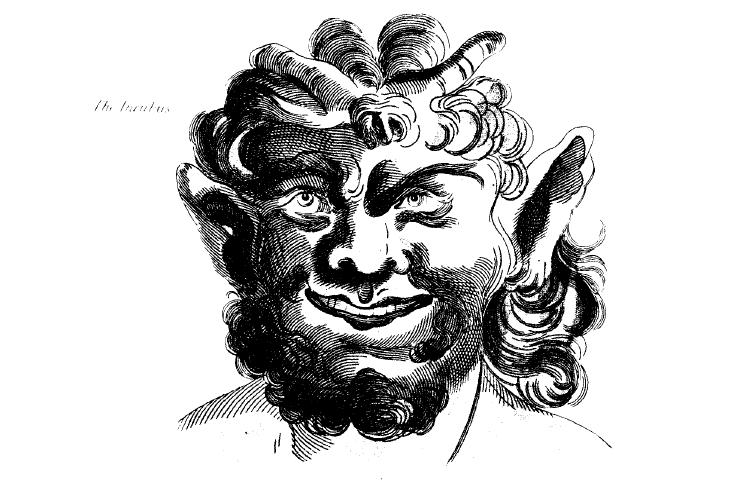
We next have ‘the Incubus’ the demon invited into a thousand beds to do his worst. Bargain basement Pan?
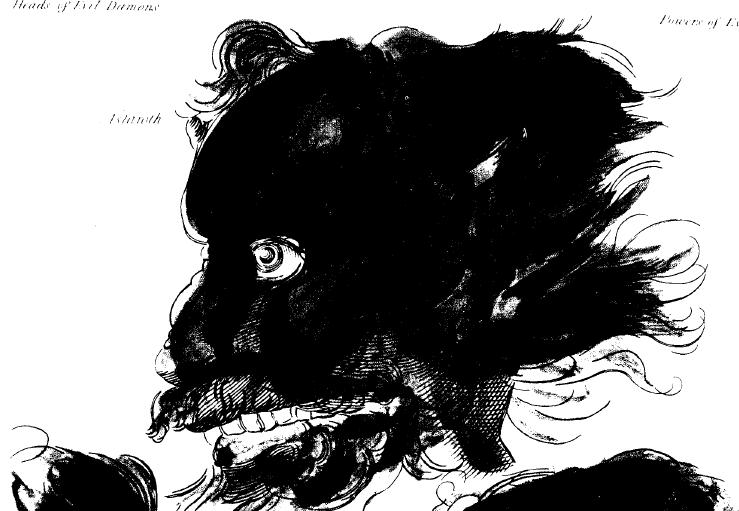
This is Astarath. Powerful the way his lips seem to have just rotted away. ‘The Prince of Accusers’, the Inquisitions patron saint.
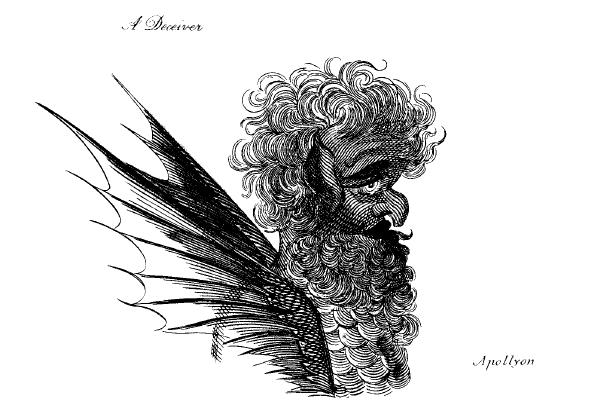
This is poor old Apollyon, the least scary of all the demons: the kind that gets eaten at the end of the Screwtape Letters. Beach wanted to hug him and tell him that everything would be alright.
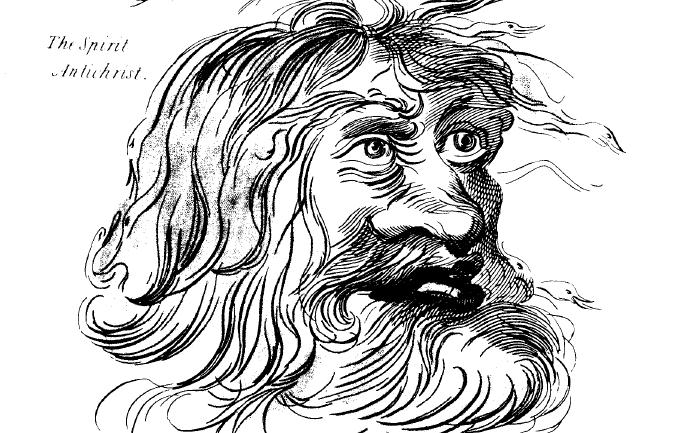
Here is Antichrist, who looks like a very bad version of the renaissance Jehovah: badly drawn that is not bad to people. If this is all we have to fear Beach is hanging around for the end times.
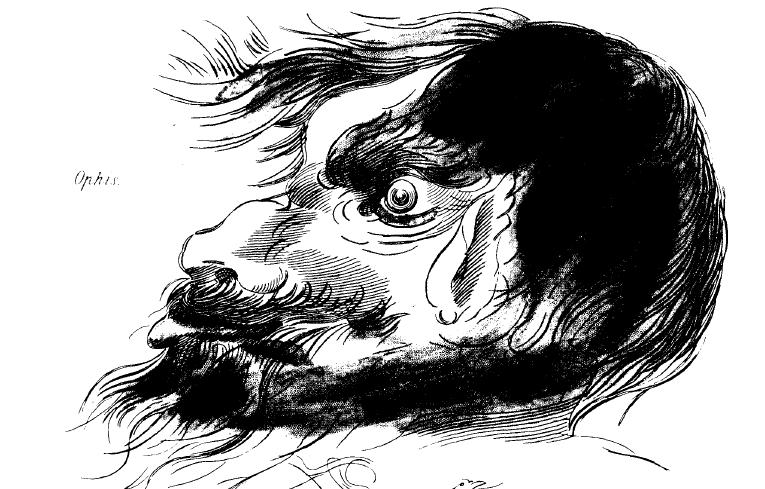
Ophis, mad as hell. Look at the revolving eyes. Typically appears as a snake and was the one who get Eve to pick that apple.
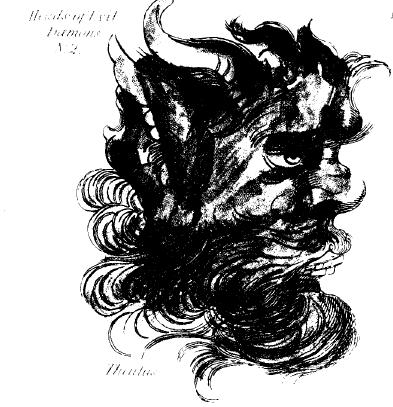
Sorry can’t read this: Thaetas? Now this chap would make a much more credible serpent in Eden.
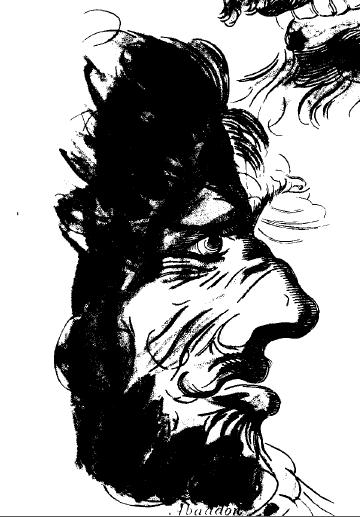
Abaddon, the destroyer (aka General of the Army of Locusts)
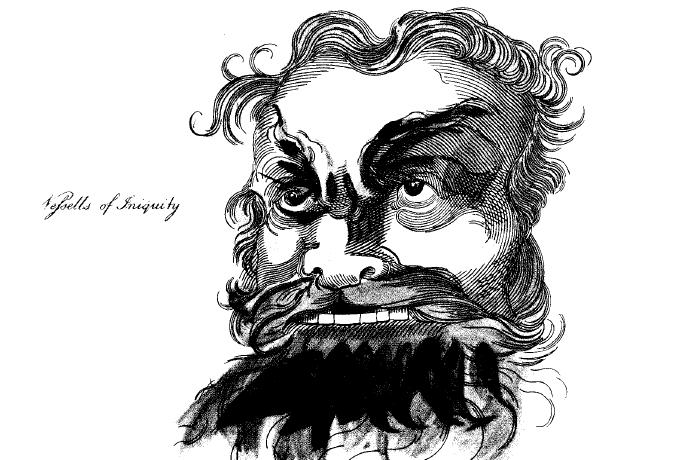
Vepsells of Iniquity? Google and Beach’s encylopedias have never heard of him. Disturbingly chompingly square teeth though.
Any help with these individual demons (and particularly their names) or any other diabolical mugshots: drbeachcombing AT yahoo DOT com
30 Nov 2015: MC writes: I’ve been reading your article about demons and their appearance.
I happen to own (a gift given to me a long time ago) a modern edition of Johann Weyer’s Pseudomonarchia Daemonum (1577), which is one of the earliest Western “handbooks” on demons and their powers. Weyer was a disciple of Agrippa of Nettesheim, probably the best known Renaissance esoterist, and in the book Weyer claims to have found this list in a manuscript entitled Liber officiorum spirituum. In this same book he also puts forward the bold (by contemporary standards) that rituals and invocations to summon demons and bend them to the magician’s will came not from Solomon, but from Cam/Cham, Noah’s son.
Anyway, the Pseudomonarchia gives a list of 69 demons, a break from the usual 72 given in other lists of demons. 72 is a “magical” or “religious” number in pretty much every Old World tradition: Confucius had 72 disciples, 72 wise men translated the Old Testament from Aramaic to (koiné) Greek, the Imam Hosayn had 72 faithful followers, and so on.
Now, these demons are no mere infernal foot soldiers. They have grandiose titles like king, president duke etc. Each of them commands whole legions of lesser demons. Each and every one of them has powers the magician can find useful and for each and everyone of them Weyer gives a description of the physical appearance it will assume once summoned.
A few examples:
Amduscias appears as a unicorn but upon command can take human form
Zagam appears as a winged bull
Forcas appears as a “very powerful man”
Malphas appears as a raven
Belial appears as a “beautiful angel on a flaming chariot”
The list goes on and on.
I strongly suspect Weyer used his immagination to fill the blanks because, apart from a handful of demons appearing as “deformed angels”, there’s a bewildering variety of froms worthy of a Bosch painting.
Collin De Plancy had a series of lithographies depicting demons made to illustrate his works: these were taken (often without crediting) from the Pseudomonarchia and are commonly found in coffebook volumes and websites devoted to the occult. They are all in free domain (Collin De Plancy having died in 1887) and Wikimedia has a selection of them. See here for example .
Now, the names. Some of them are taken from the Bible (Bael, for example) and some of them are corruptions of Greek, Latin and other words (Phoenex for example), but the bulk is made up of nomina barbara, meaning meaningless names either Weyer or other magicians made up for the occasion.
Gishzida writes ‘For enlightenment on the topic of these infernal fellows I highly recommend starting with Gustav Davidson’s “A Dictionary of Angels, Including the Fallen Angels” Which includes most of the angels in Barrett’s book.
Barrett’s demonology is of course rooted in Christianity and is intended to give a Christian point of view in regards to non-christian deities / angels / “demons” and also seems to reflect a kind of anti-Semitism which fit the milieu of 1803 London
For a bit of counter-point to Barrett’s description, take Davidson’s entry on Ashmodeus:
Ashmedai (Ashmodai, Asmodde, Asmadai, Asmodeus, Chammaday, Sydonay, etc.)-in rabbinic lore, a messenger of God, hence an angel.However, being an opponent of Solomon and ruler of the outh, with 66 legions of spirits under him, he is usually regarded as an evil spirit himself, some occult sources going so far as to identify him with the serpent who seduced Eve in the garden of Eden. [Rf. Mathers, The Greater Key of Solomon.] Good or evil, angel cr demon, he is not considered harmful; he has been characterized as a cherub, “prince of sheddim,” and as “the great philosopher.” [Rf. Jung, Fallen Angels in Jewish, Christian and Mohammedan Literature; Miller, History of Jewish Mysticism.]
Sheddim are the offspring of Lilith [Adam’s “legendary” first wife] and Adam. The had sharp claws and lived in the desert wastelands.
Davidson’s book is both scholarly and sometimes tongue in cheek. It is well worth reading and by far better than some of the later “new age” authors who desired to “cash in” on the topic of Angels.
For a counter point to the idea of “myriads of angels”, one might consider “Fallen Angels, Soldiers Of Satan’s Realm” by Rabbi Bernard J. Bamberger as quoted by Davidson says,
“The classic expositions of the Jewish faith have implicitly or explicitly rejected the belief in rebel angels and in a Devil who is God’s enemy. . . . The Hebrew Bible itself, correctly interpreted, leaves no room for a belief hi a world of evil powers arrayed against the goodness of God. . . . Historical Christianity, on the other hand, has consistently affirmed the continuing conflict between God and Satan.”
In reading Rabbi Bamberger I found he thought that anti-Semites were the closest thing to demons to actually exist in the modern world.
Or for a slightly broader view of the subject try “”The Encyclopedia of Jewish Myth, Magic, and Mysticism” by Rabbi Geoffry W. Dennis.
As recounted in Lewis Ginzberg’s “The Legends of the Jews”, Asmodeus was forced to assist King Solomon in building the Temple by providing the “worms” which were able to split and shape the marble to fulfill the requirement that the Temple’s stone would be untouched by human tools. There is also a tale of how he also got even with Solomon by abandoning him far from Jerusalem and how after a long journey Solomon returned. The aggadah [legend] concerning the creation of demons [according to Ginzberg] is
“The demons were made shortly before the Sabbath came in, and they are, therefore, incorporeal spirits–the Lord had no time to create bodies for them.”
Or one might even look a Wikipedia”The name Asmodai is believed to derive from Avestan language *aēšma-daēva, where aēšma means “wrath”, and daēva signifies “demon” or “divine being”. While the daēva Aēšma is thus Zoroastrianism’s demon of wrath and is also well attested as such, the compound aēšma-daēva is not attested in scripture”.
My personal opinion is that Barrett’s book was written in the light of “sensationalism” with the intent to mislead and “scalp the marks [i.e. the credulous] of their money”. In the facsimile copy of the book I have [somewhere] there is a page which advertises Barrett’s Occult Classes.’
Thanks Gishzida!
KMH writes ‘Believe it or not, demons, like angels, (and gods) don’t give us their personal names anymore. All we hear are their functions used as their names. Since they are what you might term extra-dimensional, their natural form in our dimension would be a ball or sphere. The human characteristics they exhibit are chosen for their similarity to their function if they were human. Demons function differently depending on the religion they are involved in – they may be in two or more religions simultaneously. They may also modify functions over the centuries. So, sorry to say, very little, if anything can be gained from those names and illustrations, other than what seemed appropriate at the time and place of the illustrations.

